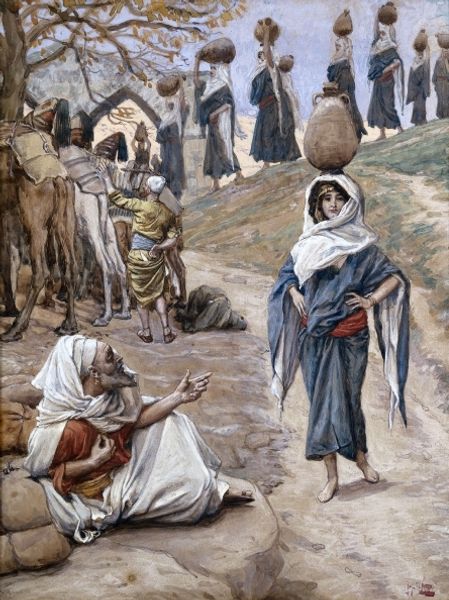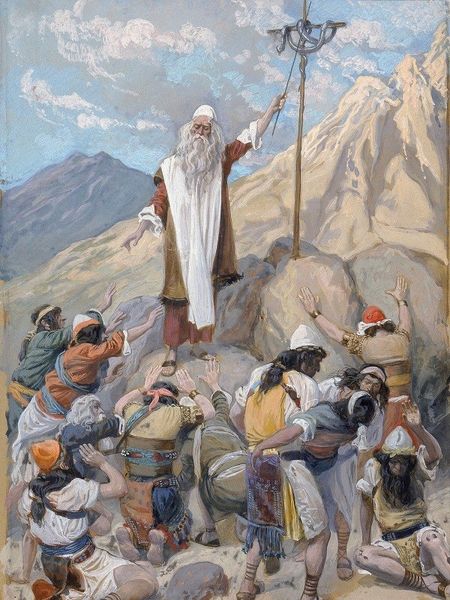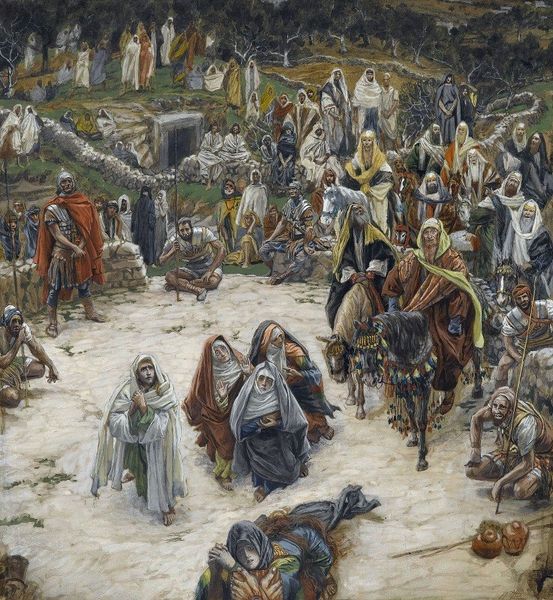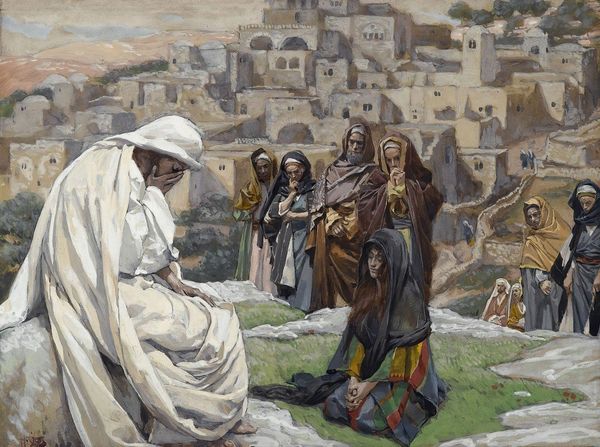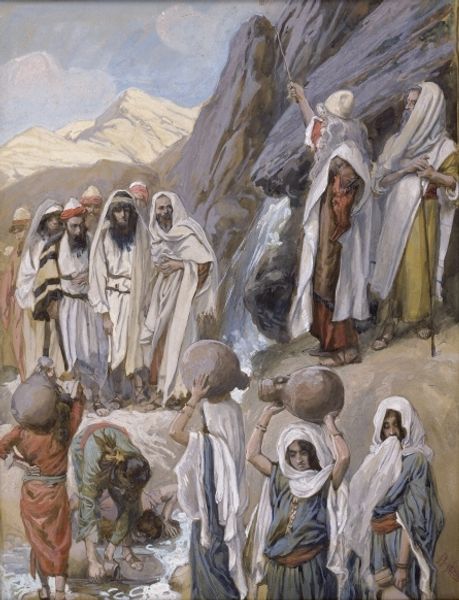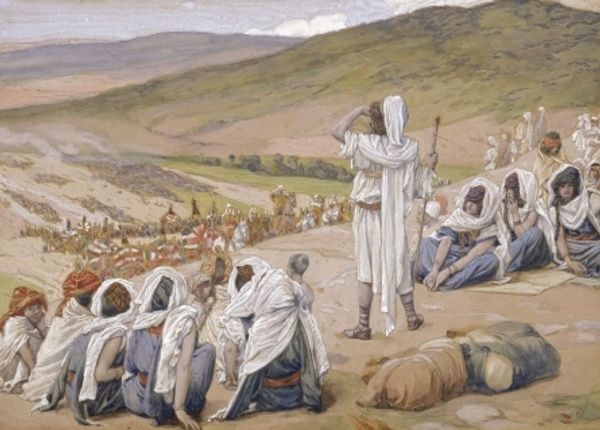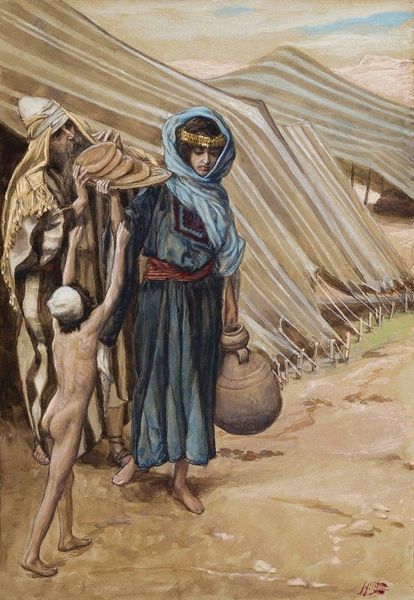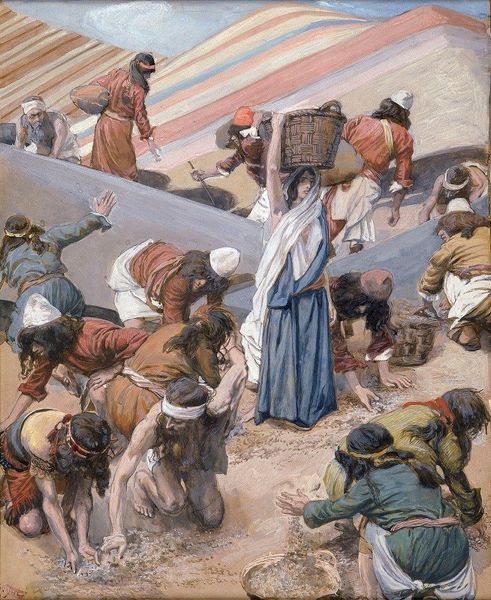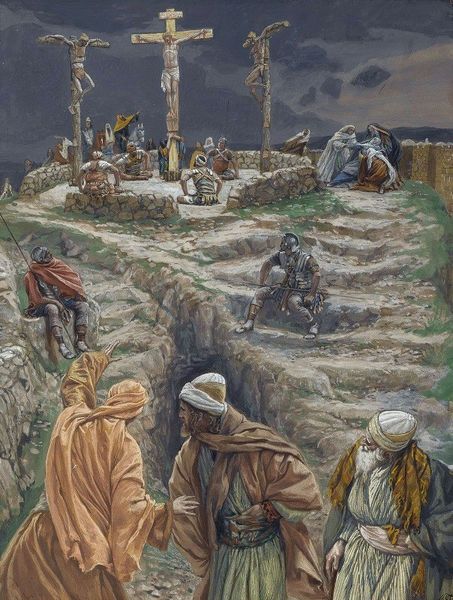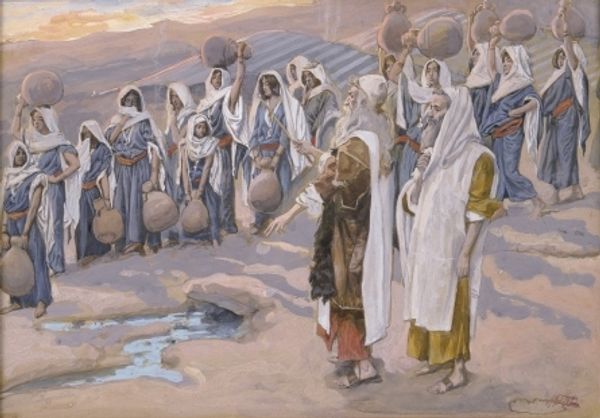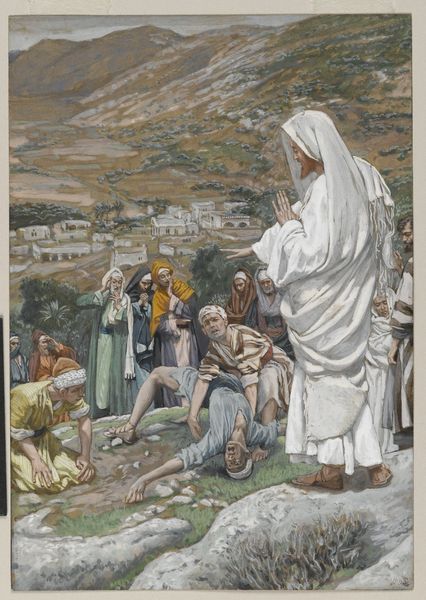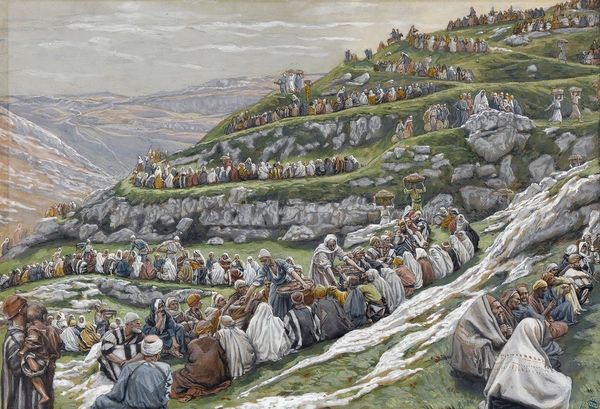
painting, oil-paint
#
narrative-art
#
painting
#
oil-paint
#
landscape
#
figuration
#
oil painting
#
history-painting
#
academic-art
#
watercolor
Copyright: Public Domain: Artvee
James Tissot created ‘Jacob and Rachel at the Well’ using watercolor and gouache over graphite on gray wove paper. The initial impression is of a tableau vivant, a carefully arranged scene, dense with figures both human and ovine. Consider how Tissot uses color: muted earth tones dominate, punctuated by the brighter hues of the figures’ garments. Notice also the composition, how the characters are arranged. Rachel, in the center, is posed to direct our gaze downwards and around. Jacob, in the foreground, kneels at the well, its stone lid prominent and cylindrical. Tissot presents a reading of the biblical narrative in the style of Orientalism which was then fashionable. However, he disrupts the established aesthetic conventions with his studied arrangement of figures, and by favoring a certain flatness of form, he moves away from academic painting towards what we could now recognise as early modernism. The painting creates a sense of staged drama through its use of color, composition, and subject. Tissot’s painting destabilizes traditional readings and invites continuous questioning and reinterpretation.
Comments
No comments
Be the first to comment and join the conversation on the ultimate creative platform.
